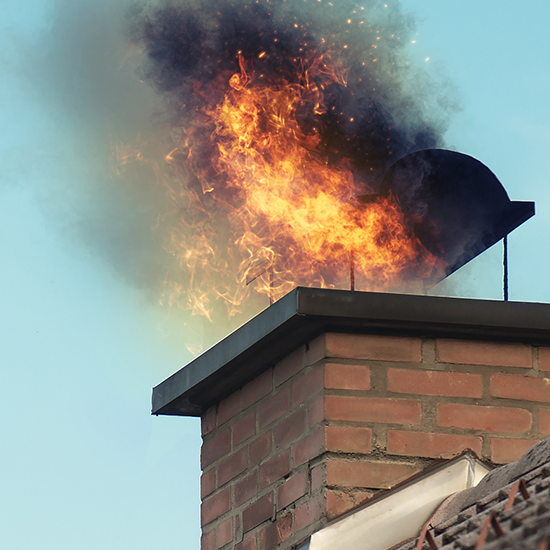Stay Ahead of the Curve: Advanced Chimney Maintenance San Jose Techniques Revealed
Stay Ahead of the Curve: Advanced Chimney Maintenance San Jose Techniques Revealed
Blog Article
Specialist Tips for Effective Chimney Upkeep You Need to Know
Smokeshafts function as important elements in several homes, providing warmth and comfort. However, ensuring their appropriate maintenance is usually forgotten up until problems occur. Comprehending the complexities of chimney treatment can be the key to preventing expensive repairs and protecting your home and household. From the value of routine inspections to risk-free functional methods, a comprehensive method to smokeshaft maintenance is vital. Allow's discover expert ideas that can aid you maintain your smokeshaft in optimal problem for years to come.
Relevance of Normal Inspections
Normal assessments of chimneys are essential for ensuring their safety and security and performance. Smokeshafts play an essential function in airing vent out unsafe gases and maintaining proper air movement in a home. In time, creosote accumulation, debris, and structural damage can happen within the chimney, posturing significant risks such as chimney fires or carbon monoxide gas leakages.
During a chimney evaluation, trained specialists analyze the problem of the chimney, searching for any kind of signs of damage, blockages, or deterioration. They likewise check the honesty of the flue, smokeshaft liner, and chimney cap to ensure everything remains in appropriate functioning order. By identifying and addressing concerns early on, costly fixings or possible risks can be prevented.
Regular assessments not only help in preserving the safety and security of the chimney yet additionally add to its overall performance. A clean and properly maintained smokeshaft runs more efficiently, guaranteeing appropriate air flow and minimizing the risk of indoor air contamination. Scheduling annual chimney examinations is a proactive measure that house owners can take to safeguard their residential property and enjoyed ones.
Cleansing Methods and Frequency
Preserving the safety and effectiveness of a chimney includes not only regular examinations yet additionally implementing proper cleaning techniques and figuring out the ideal frequency for cleaning. Smokeshafts should be cleaned up by an expert chimney sweep a minimum of once a year, even if they are not frequently used. If the smokeshaft is used regularly, specifically with wood-burning stoves or fire places, it may call for more frequent cleansings to avoid the accumulation of creosote, an extremely combustible material that can lead to smokeshaft fires.
The cleansing process usually involves eliminating creosote, soot, and debris from the smokeshaft flue, smoke chamber, and firebox. Specialist chimney sweeper use specialized vacuums, brushes, and devices to make sure extensive cleaning without producing a mess in the home. Furthermore, they check the chimney's framework for any indications of damage or put on that might require fixings. Homeowners must never disregard chimney cleaning, as it is vital for maintaining a useful and risk-free chimney system - Chimney Maintenance San Jose. Regular cleansings not only lower the threat of chimney fires yet likewise boost the chimney's total efficiency and long life.
Attending To Chimney Leaks

When addressing chimney leakages, extensive examination and prompt repair work are important to stop water damage and preserve the architectural integrity of the smokeshaft. Leakages in a smokeshaft can lead to major problems such as mold growth, degeneration of the smokeshaft check over here structure, and also prospective fire dangers. To effectively deal with smokeshaft leaks, start by evaluating the smokeshaft cap, crown, flashing, and stonework for any kind of indicators of damages or wear.
Recognizing Creosote Build-Up
To comprehend the potential risks of creosote accumulation in chimneys, it is vital to recognize its development procedure and influence on smokeshaft performance. Creosote is a black or brown tar-like substance that collects inside smokeshaft systems when wood or fossil fuels are melted. As smoke rises via the chimney, it cools and condenses, leading to the formation of creosote, which complies with the chimney walls.

Normal smokeshaft inspections and cleanings by a professional chimney sweeper are crucial in stopping creosote accumulation and making sure the risk-free procedure of your chimney system.
Safe Procedure Practices
Applying correct security protocols is essential for the effective website here and safe and secure procedure of smokeshaft systems. Constantly make certain that the chimney is expertly inspected and cleaned regularly to remove any creosote build-up, which can lead to chimney fires.
Moreover, make certain to only shed skilled wood in your fireplace, as green or wet timber can create even more creosote and trigger unsafe chimney blockages. Never ever leave a fire unattended and constantly make certain the fire is entirely extinguished before going to bed or leaving the home. By adhering to these safe procedure techniques, you can take pleasure in a relaxing and warm fire while ensuring the safety and security of your home and loved ones.
Final Thought
In verdict, preserving your smokeshaft is important for guaranteeing its safety and efficiency. Normal inspections, appropriate cleaning methods, resolving leakages, taking care of creosote accumulation, and adhering to safe operation methods are vital aspects of chimney maintenance.
Over time, creosote build-up, debris, and structural damages can occur within the smokeshaft, posing significant risks such as smokeshaft fires you can look here or carbon monoxide leaks.
If the smokeshaft is utilized on a regular basis, particularly with wood-burning cooktops or fireplaces, it might call for more regular cleanings to protect against the accumulation of creosote, an extremely combustible compound that can lead to smokeshaft fires. (Chimney Maintenance San Jose)
To understand the prospective threats of creosote build-up in chimneys, it is essential to recognize its development procedure and influence on chimney efficiency. As smoke climbs through the chimney, it cools down and condenses, leading to the development of creosote, which sticks to the chimney wall surfaces.
Constantly make sure that the chimney is skillfully evaluated and cleansed frequently to remove any type of creosote buildup, which can lead to smokeshaft fires.
Report this page